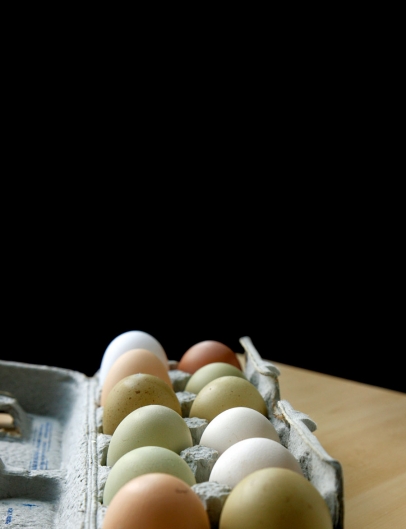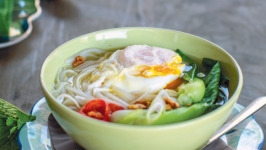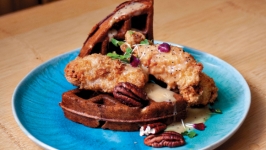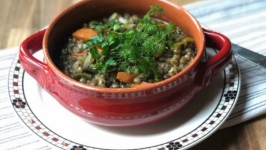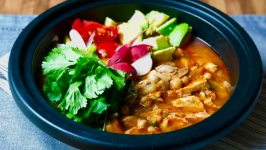Six Egg Questions Answered
We asked around for answers to some common egg questions. Here’s what we learned. Let us know if you have other questions—or a different answer!
White, brown, blue or green?
Ever had those beautiful greenish chicken eggs from a local vendor? Contrary to common belief, the greenish tint is not caused by a diet rich in grass and greens. It is determined simply by the breed of chicken: Some chickens lay brown eggs, others white, and yet others produce blue or greenish eggs. This makes buying eggs from heritage-breed chickens raised on pasture such fun: They taste good and come in differently colored shells—sometimes even speckled!
How old is that egg?
To check if an egg is fresh or old, put it in a bowl of water: Fresh eggs stay on the bottom. The older the egg, the closer to the surface it will rise: It’s still good if one end is still standing on the bottom of the bowl but no longer good to eat when they float to the surface. This has to do with the shrinking content, causing air pockets to take the place of whites. A fresh egg has a firm yolk and firm whites; runny or even watery whites indicate an old(er) egg.
Pale or orange yolk?
While eggshells tell a story of different breeds, the color of the yolk is a good indication of what the chicken ate. The blander the diet, the paler the yolk. A pasture-raised chicken that had access to bugs, herbs and flowers will have a deep orange yolk.
Can you eat odd-shaped eggs?
Like anything that is made “by hand,” eggs can be inconsistent—in a good way. Chickens can have an off day and produce an egg that is very small or extremely large or has an uneven shell or uneven coloring on the shell, for instance. Most of these are perfectly edible but rarely make it to market because—as with dented cans or damaged cartons—consumers don’t want them.
How do you boil an egg and have the yolk centered?
Want to make deviled eggs but when you peel the eggs, the yolks sit on a flimsy layer of egg white on one end? Here’s how to avoid that: When the water comes to a boil, stir around the eggs to create a vortex. Basically, you’re rolling the eggs over as they boil so the yolk settles more in the center. Other tips include turning the eggs pointy end down before you put them into boiling water.
How do you cook the perfect egg?
Practice makes perfect, really it does. There are so many variables (altitude, outside temperature, size of the egg, number of eggs in the same pot) that timings are often a guideline only. Determine how you want your egg (runny yolk or firm) and try it out. Generally, if you lower your eggs into boiling water, five minutes yields a runny yolk to 10 minutes for a firm yolk with just a glossy softer core.
How do you peel an egg without damaging that shiny white?
Generally, shock the egg right after taking it out of hot water by placing it in ice water for at least two to three minutes. If it’s a hard-boiled egg, crack it all over and remove the shell. If it is a soft-boiled egg, just peel very carefully.


